The Article
The Planar 1 Plus Turntable From Rega
4th June 2018
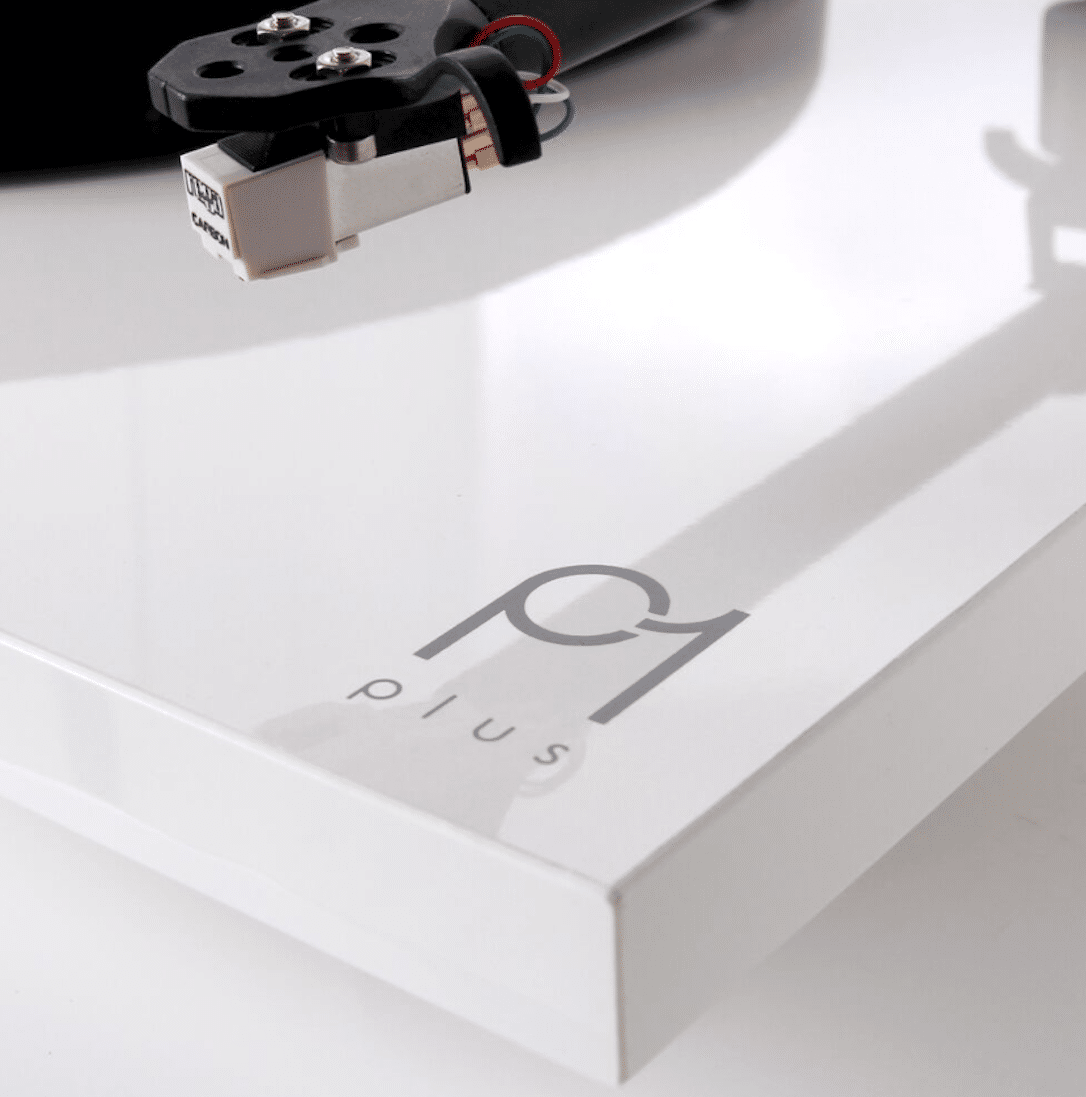
Offering a Planar 1 turntable with a modified Fono Mini A2D phono amplifier built in, Paul Rigby reviews the Rega Planar 1 Plus. And then wishes he hadn’t
I recently reviewed Rega’s Planar 1, the latest incarnation of its entry level turntable. As you can see HERE, I loved it. In fact, it attained a very rare Golden Groovy, 10/10 rating. One of a (very) small handful of products to receive that accolade. Considering the price, the sound is sublime, it looks great and rather swish and not at all budget-like, it’s very easy to install, the printed instructions are short, sweet and secured on top of the platter by the spindle and it’s priced nicely too, somewhere around the £250 mark.
Every pound of the limited build budget has been used perfectly and efficiently. There’s a new RB110 tonearm with a superior sound and securing latch for the arm tube. There’s no anti-skate to worry about while, compared to the older RP1, a new 24V, low noise, synchronous motor (the first budget design from Rega to include one) is featured. A new motor PCB and aluminium pulley sits along a new plinth plus 23mm phenolic platter. The re-designed bearing sits above three new noise reducing feet. You also get a reliable Rega Carbon cartridge.
If you want more information on the design of the Planar 1, click that link above.
What made the ground shift below my feet a touch was the news the Rega was going to release a ‘Plus’ version of the Planar 1. Not a turntable with more advanced audiophile features, as the name might imply but a bundle of sorts. That is, the Plus takes the Planar 1 and bolts a phono amplifier underneath the plinth. In this case, it has fitted a stripped down version of the excellent Fono Mini A2D phono amplifier to the deck. Removing the Fono’s A2D bit and bobs and the USB port in the process.
There are, no doubt, practical reasons why Rega has done this. Let me suggest a few. To add customer value by bundling the two together (we’ll get to that point in a moment), to decrease the amount of cables that you need to worry about (although removing two cables from the set-up is a relatively minor headache saver), to reduce the footprint of the two separate products for those users where space is of a premium (although the Fono is a pretty small item, as it is), to cater to the technophobe by simplifying the installation process and maybe to enter the ‘bundling’ fad that the industry has fallen prey to of late. Recent hi-fi show attendances has revealed to me that, along with active/powered speakers, the latest industry ‘craze’ is to bundle previously disparate items together into a single chassis. I reviewed the Elipson music centre recently, for example, which adds network audio to radio and a CD player and more.
The practical problem with Rega’s Plus design, though, is that you’re stuck with the internal phono amplifier. You cannot ‘upgrade’ to an external model. There is no switch to move from an internal to an external phono amplifier. This is a severe limitation for any turntable/phono combo, never mind one that costs £329. It boxes you into a corner in terms of possibly sonic potential.
Apart from that, before the sound tests are addressed, allow me to reveal my basic fears for the Plus. Firstly, in sonic terms, nothing good has ever emerged from a turntable with an internally fitted phono amplifier. Both the turntable and the phono amplifier are two of the most fragile components in the entire hi-fi chain. Fragile in terms of their susceptibly to outside noise influences from: other power and circuit components, vibration, mains, mobile phones, routers/wi-fi extenders, etc. Positioning a phono amplifier very close to a turntable is not recommended, never mind bolting one to the other.
Throwing money at the problem doesn’t work, either. I’ll give you two examples. T+A turntables (around £5,000 in broad terms) feature a phono amplifier module that slides, PC card-like, into the plinth. The inherent sound quality results are quite nice but, when compared to a turntable with an external phono amplifier, the relative sound is boring and bland. Roksan takes another pathway, bundling the phono amplifier with its Caspian VCS 2 Vinyl Control System (£3,500) featuring a speed control and power supply (or two) into a full size chassis that sits adjacent to the Roksan Xerxes turntable (around £5,000 including and arm and cartridge). Ultimately, the sound from the phono amplifier is grey and faceless. The problem is the veiling noise from the associated components leaking into and around each other that dulls the sound and dampens any detail.
And Rega believes that it has cracked the case with the Plus? At £329?
And that’s another point. The only reason to bundle a turntable and phono amplifier together is money. Where money matters more than sound quality. Sub-budget turntables (i.e. £200 or much less) do it all of the time to reduce costs and add value. The bundling makes sense in this case. This is an arena where every tenner is important to a user’s constricted budget.
Lucky customers sporting a larger budget should demand enhanced sound quality and should reject the built-in phono amplifier option. Simple as that.
Now, the one unknown variable to add to the above is Rega’s assertion that it has taken steps to shield the Plus from harmful noise that might emerge from the bolted on phono amp – and vice versa. If Rega has done this successfully, then it could revolutionise this analogue design variant. So, let’s see how Rega got on then.
SOUND QUALITY
I began with Ella Fitzgerald’s version of the Sinatra classic, One for My Baby. I began by testing the Rega Plus using its built in phono amplifier against various low cost, Chinese-made sub-budget turntables using their own built-in phono amplifiers and the Plus won, hands down, sonically, in every frequency area. At £329 for a Plus, though, that shouldn’t be a surprise.
I then brought out a Lenco L-3808 (£200), flicked its internal phono amplifier switch to external (if Lenco has such a thing, why doesn’t Rega?) and added an external Cambridge Audio 551P phono amp (£56 or so from eBay).
Right from the beginning, the Rega struggled and the problem was a veiling noise and I knew where that was coming from, the built-in Rega phono amp. The noise was a sort of light ‘sheen’. Nothing aggressive. Not a buzzing or anything obvious. It was almost the sound you get from too much compression within music. I’m sure you’ve heard that before. The sort of effect that really bugs you after a while. It gets under your skin. The noise veil introduced enough of a covering to remove detail and to dampen dynamics. Rega might have utilised shielding to keep the noise out but, obviously, not enough was employed because this noise was everywhere. In comparison to the general output of the Plus (£329), the cheaper Lenco/Cambridge combination (£256) sounded like a £1,000 set-up. It offered a smooth, relaxing sound, in comparison.
Through the Rega, Fitzgerald’s vocal delivery was fractured. This from the smoothest vocal delivery in the business. Her voice sounded worried. It was as if something truly horrible was going to happen after the session and she was fretting about it during her performance. She sounded positively tense.
The brass was rather harsh in tone too. The muted trumpets, especially during crescendos, were thin, raspy and aggressive while the cymbals had a static infected quality.
Actually, the cymbals offered a perfect metaphor for the Plus’ problem so they deserve further exploration. While concentrating, you could hear supreme quality from the cymbals. The cymbals sounded sublime. Large, expansive, dynamically stretched and reaching upwards, forever upwards. You could really hear the larger nature of these big pieces of metal. The sheer scaling detail from the Rega was stupendous. The problem was the blanket of noise that covered all of this beauty, it turned the cymbals into something foreign. ‘Pretend cymbals’, if you will. And this is the thing with the Plus, you could hear the quality behind the noise. The noise was like a fence, you wanted to peer over the top of it to get to the great sound quality behind. You could hear the Planar 1 trying, even at this point, to be the best. And it was actually heartbreaking. Speaking as a dedicated audiophile, it was actually upsetting to hear what Rega has done to this beautiful turntable.
I changed to the sitar from Ravi Shankar’s nephew, Ananda (he died way too soon at just 56 years of age). He released a self-titled LP in 1970 mixing traditional cultural content with more contemporary arrangements. Which is why I played his version of the Rolling Stones’ Jumping Jack Flash. Odd but interesting, it’s largely an instrumental with the sitar centre stage, a rock arrangement plus a few backing singers interjecting around the chorus.
How does the Plus compare to contemporary Rega models? I was going to bring in a standard Planar 1 but decided to go further. I used an older RP1 (which is slightly inferior to the standard Planar 1) plus the Cambridge phono amplifier (which is inferior to the Rega Fono). So how did the new Plus (£329) compare to this slightly ‘lesser’ system? Combination second-hand price? Around £256.
Let’s start with the negatives in terms of the overall sound quality of the Plus. Firstly, the mids sounded constricted, the sitar sounded rather squeezed and not particularly relaxed. The bass was shiny. That is, the bass bounced and sounded like a plastic ball on Tarmac: full of punch and impact but with reduced organic response and not as much ‘give’ when the drumstick hit the skin of the drum. A transparent recording, on a properly prepared budget system, will offer elements of this treasure. Not here.
Taken as a whole? From the Plus, as I say above, the song sounded like the record label had added a touch of compression to the recording. The reason for these negatives? Again, easy. Point the finger directly at the built-in phono amplifier. Frankly, the much cheaper Rega RP1/Cambridge combination left the Plus in its sonic wake.
Are there any positives to be had from the Plus? If you like a more edgy midrange, one that snuggles up to a digital level of midrange attack and one that provides more bass slam and force but gives you all of this with a wide, expansive soundstage then the Plus is for you.
Another problem with the Plus and the price of the same, is that it has to be compared directly with the vanilla Planar 1 with an external Fono Mini A2D phono amplifier hanging off it (a combination Planar 1/Fono price of £339, just a tenner more than the Plus).
Because the basic Planar 1/Fono combo’s sound is anything but vanilla then the Plus will always fall at the last fence. It will always sound like a poor relation to the basic Planar 1/Fono and will always feel like a ‘bad deal’. This is the downside of creating a truly great product (i.e. the Planar 1) and the danger of fiddling around with the same (i.e. the Plus). The enormous loss in comparative sound quality suffered by the Plus is worth a lot more than that £10 comparative price difference.
CONCLUSION
Rega has seriously cocked up here. It shouldn’t have released this product. Not ‘as is’ and at this price, at any rate. It should have designed a different deck, in a different wrapper, basically inferior to the Planar 1 and cheaper to build with a lesser quality, built-in phono amp and given it a different name and done so at a much cheaper price.
The Plus should have been a one-off, specialised deck, disassociated from the Planar 1. Why is that important? Because forcing the Plus into the Planar 1 family harms the Planar 1 by association. The Plus demeans and actually damages the Planar 1 brand.
So, what’s the Plus good for? Firstly, Rega fans (and there’s plenty out there) will buy this turntable no-matter what. Users who do not trust plastic Chinese productions will buy the Plus. Users who like the quality finish and all-in-one nature of the Plus will buy it. It will appeal to image-conscious technophobes too.
These potential customer sectors remain a niche, though. The most important core customer type out there is the ardent budget hi-fi buyer. That crucial customer type counts their pennies but they still want great sound. They want value too. I’m afraid that this buyer type will not – or should not – even consider the Plus as a purchase option. Both the Lenco (with a low cost, upgraded external phono amplifier) and Rega’s own Planar 1 with an external Fono phono amplifier squeezes the Plus until it squeals both in terms of price and performance. To coin an old adage, the Plus is stuck between a rock and a hard place.
As a budget turntable in today’s market? The Rega Planar 1 Plus is wholly ill conceived and badly positioned. It sends out the wrong messages in terms of sound quality expectations and, if you factor in Rega’s importance to the industry as a brand to be trusted and as a reliable entry point for the beginner into the world of vinyl, the Plus sets the analogue wing of the hi-fi industry back by years.
This is not a Rega Planar 1 Plus it is, sadly, a Rega Planar 1 Minus.
REGA PLANAR 1 PLUS TURNTABLE
Price: £329
Website: www.rega.co.uk
TO BUY CLICK BELOW:
EUROPE – https://amzn.to/3ejqYyk
USA – https://amzn.to/383bMo7
GOOD: finish, turntable design, phono design, broad soundstage, for solid state fans
BAD: built-in phono amp, price, pinched treble, plastic bass, constricted mids
RATING: 5
[Don’t forget to check out my Facebook Group, The Audiophile Man: Hi-Fi & Music here: www.facebook.com/groups/theaudiophileman for exclusive postings, exclusive editorial and more!]
REFERENCE
Rega RP1 turntable
Cambridge Audio 551P phono amp
Rega Brio-R amplifier
Tellurium Q cables
Blue Horizon Professional Rack System
Harmonic Resolution Systems Noise Reduction Components
All vinyl was cleaned using an Audio Desk’s Ultrasonic Pro Vinyl Cleaner

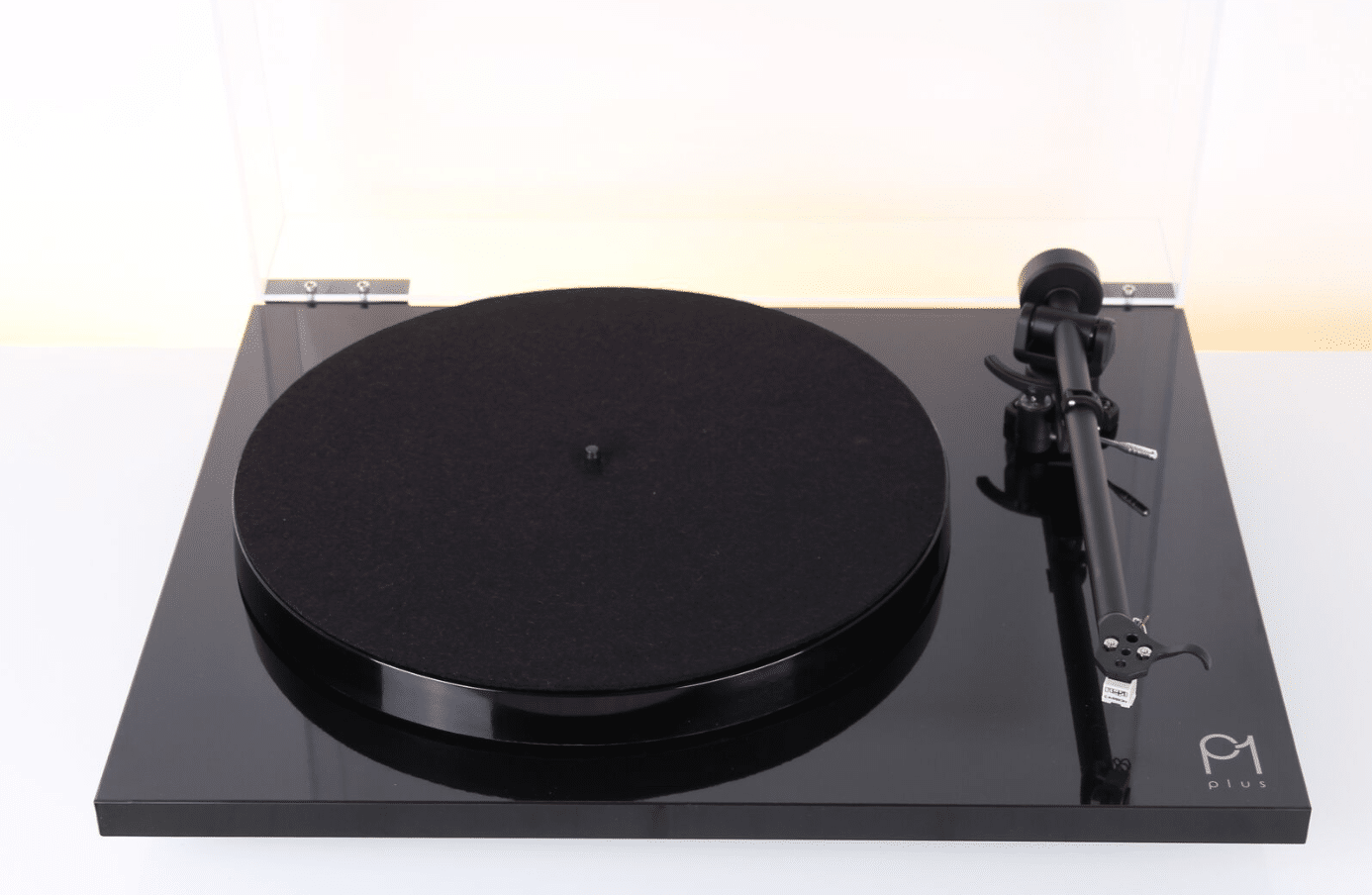
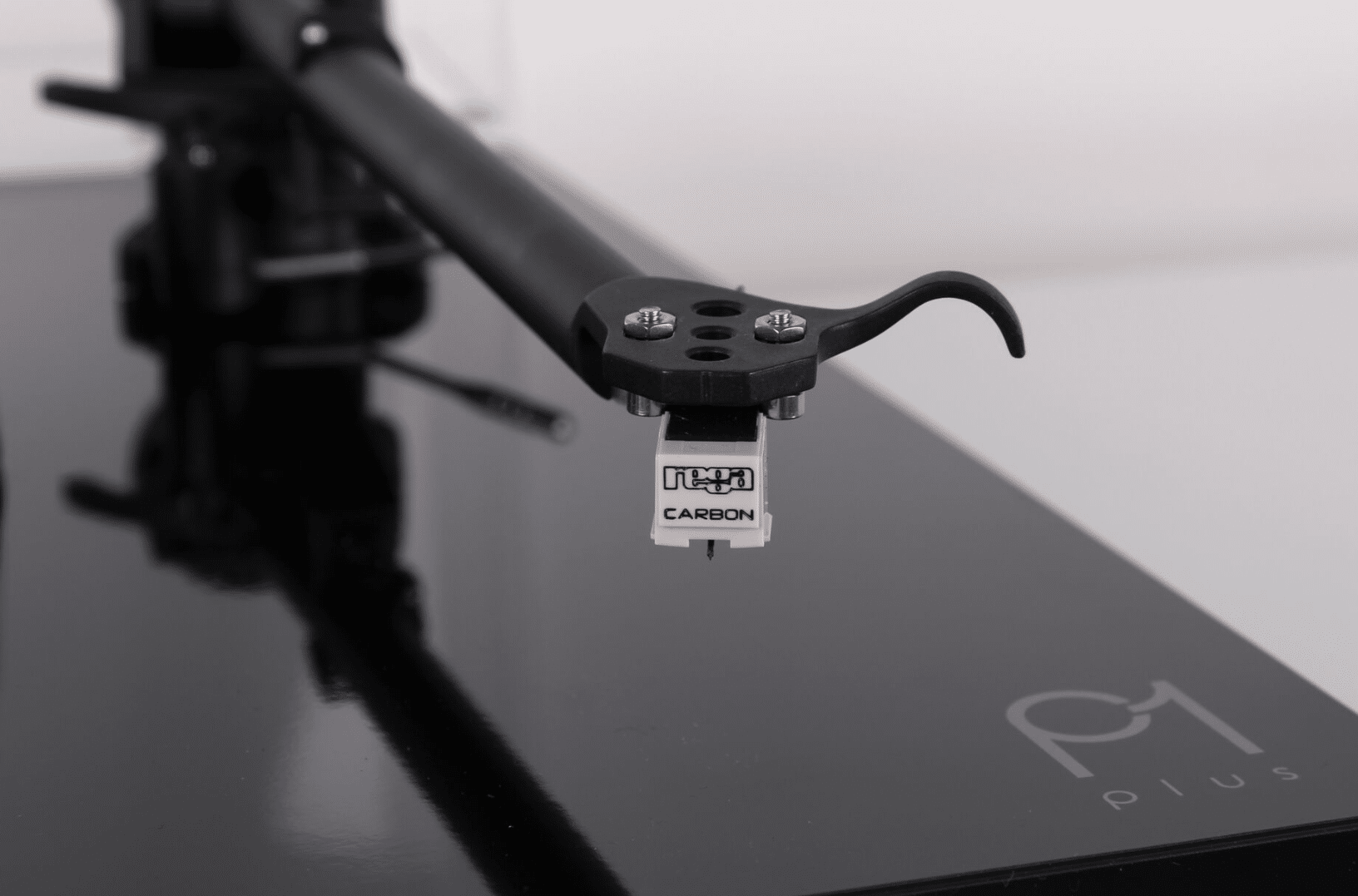
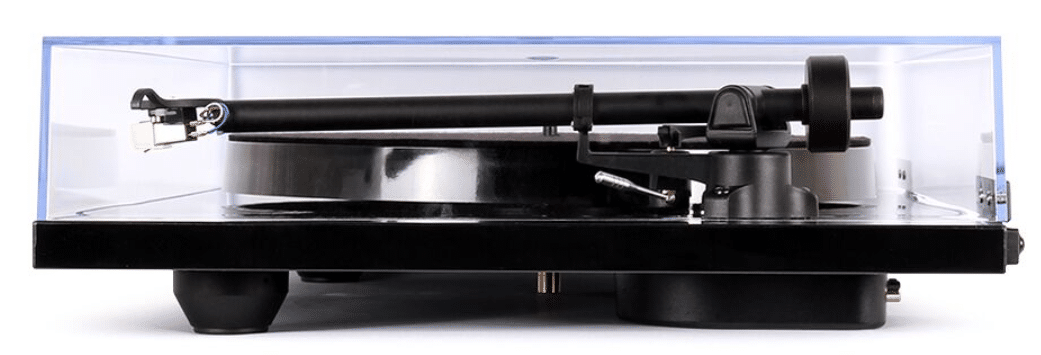
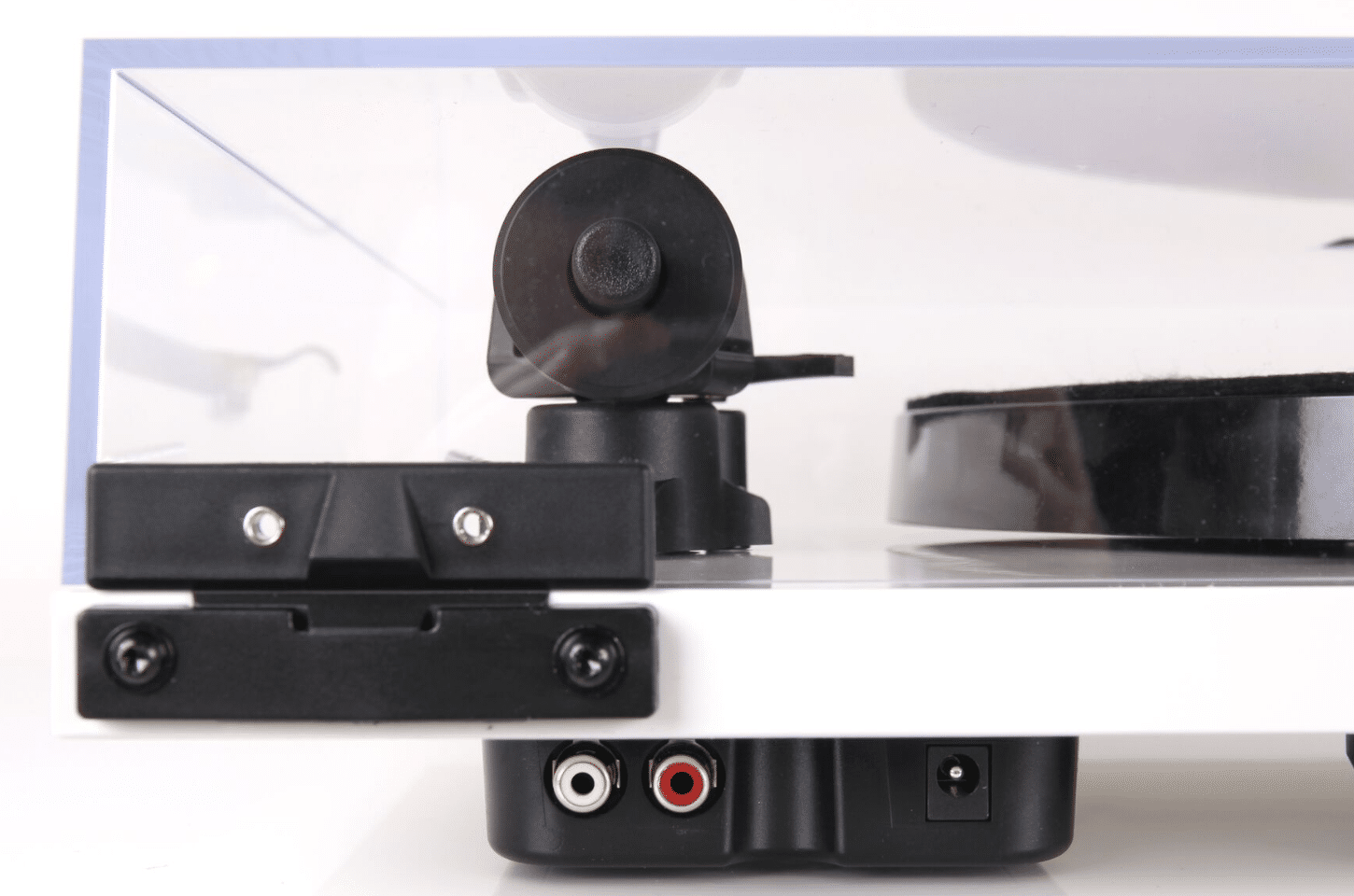
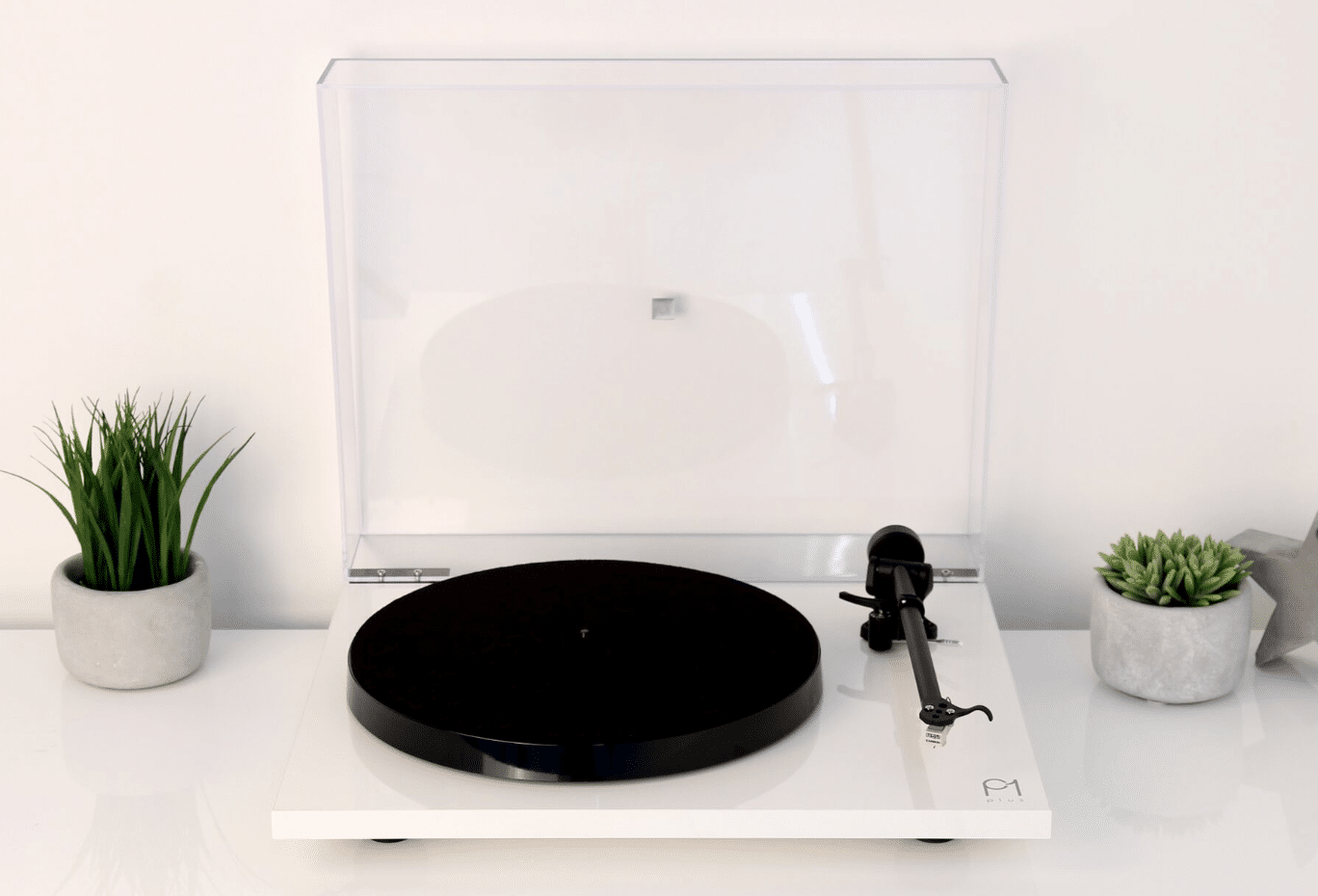
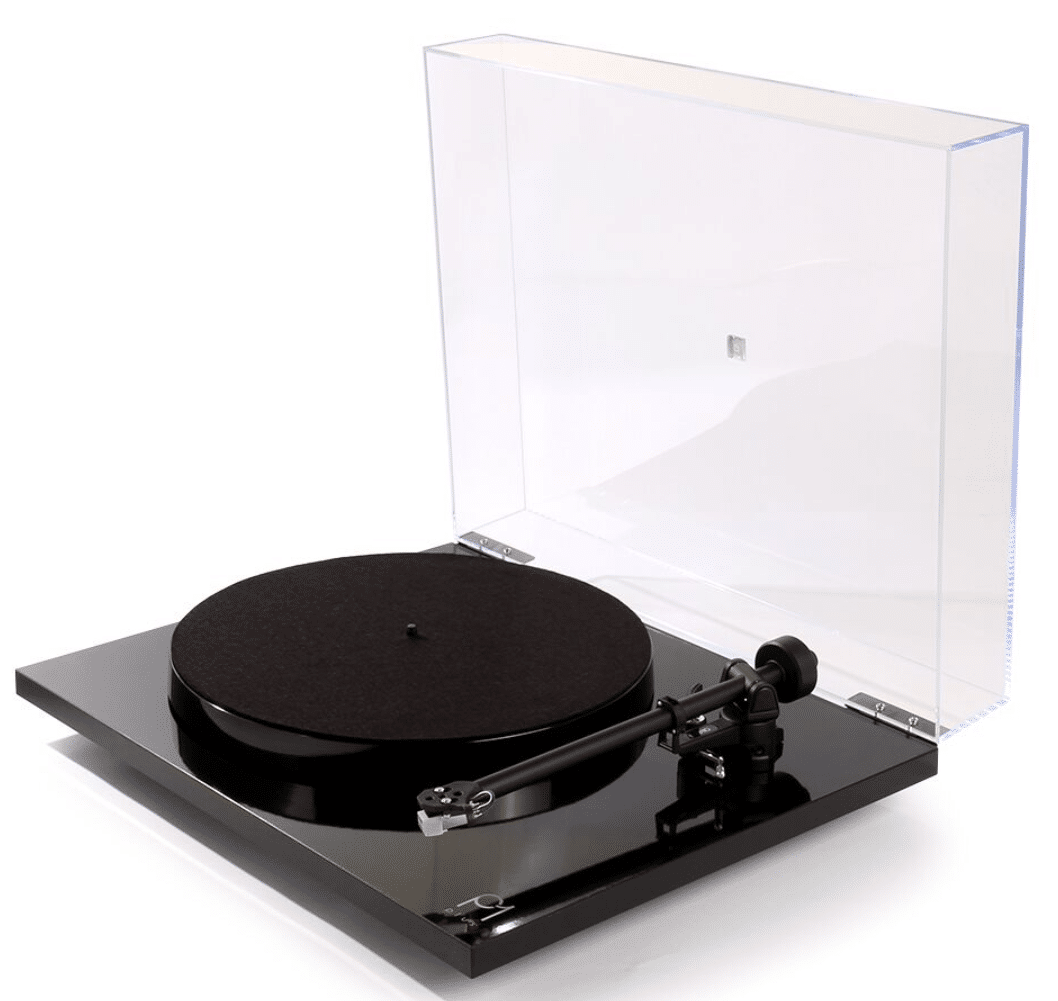
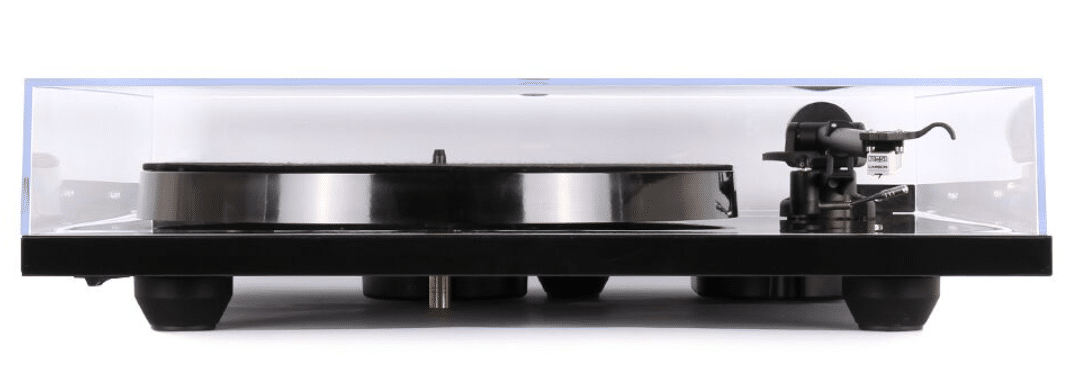
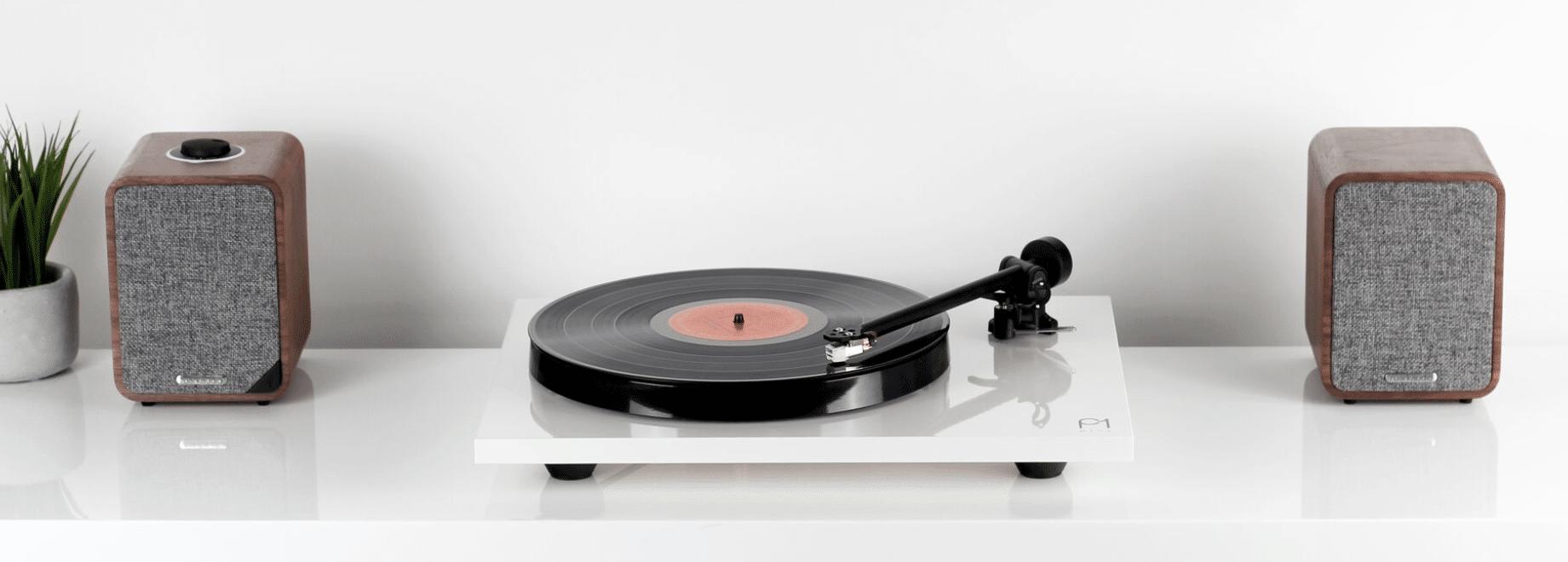
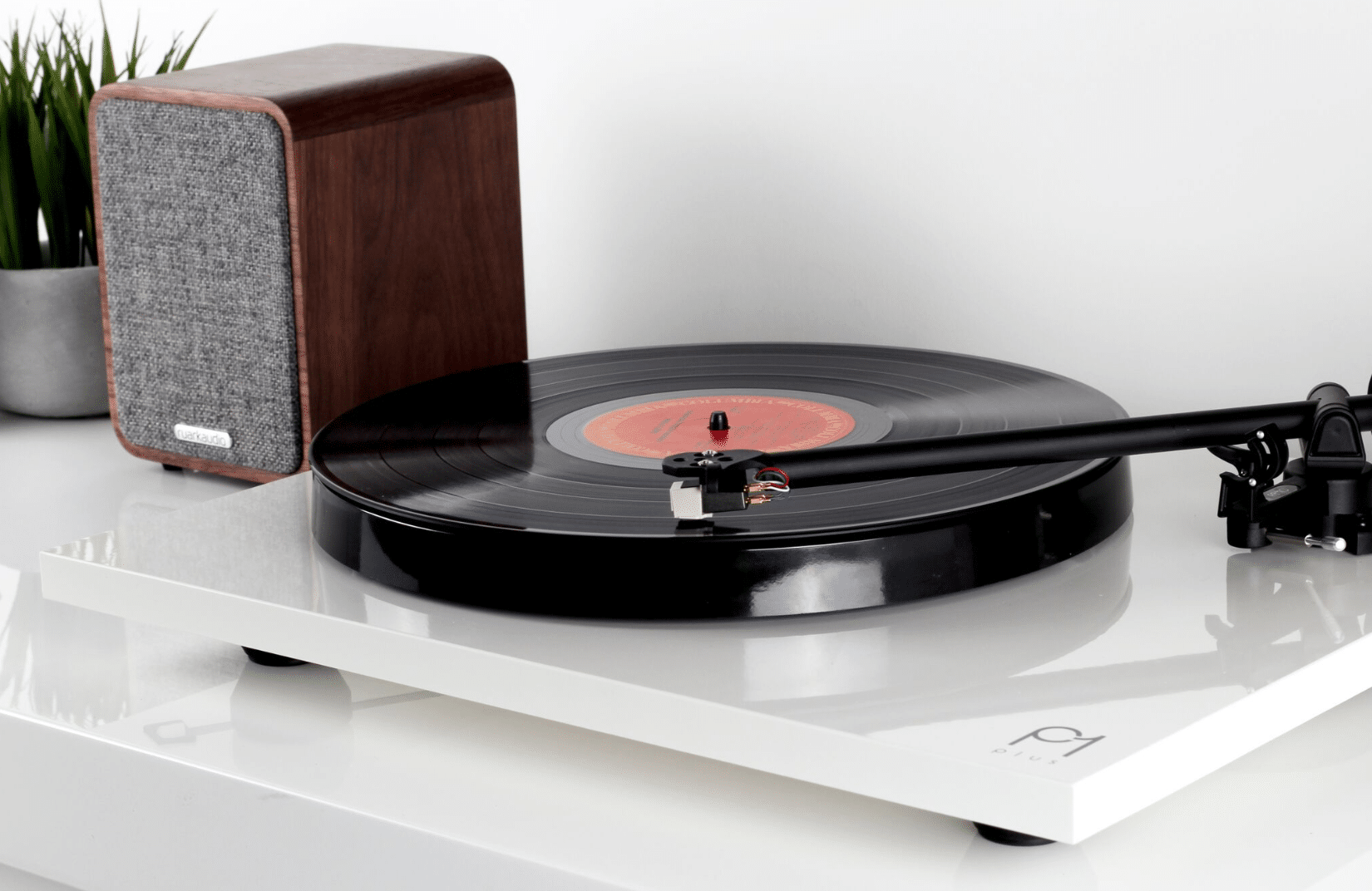
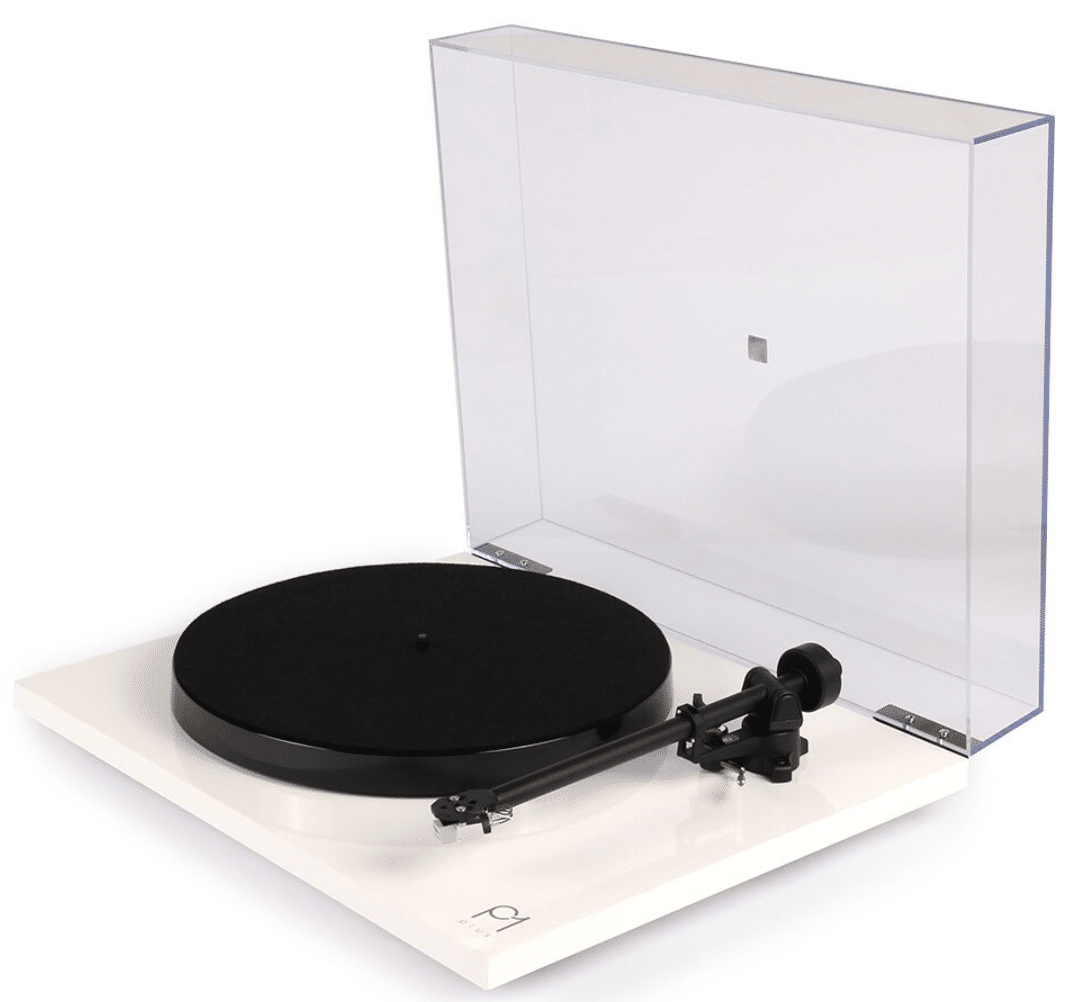

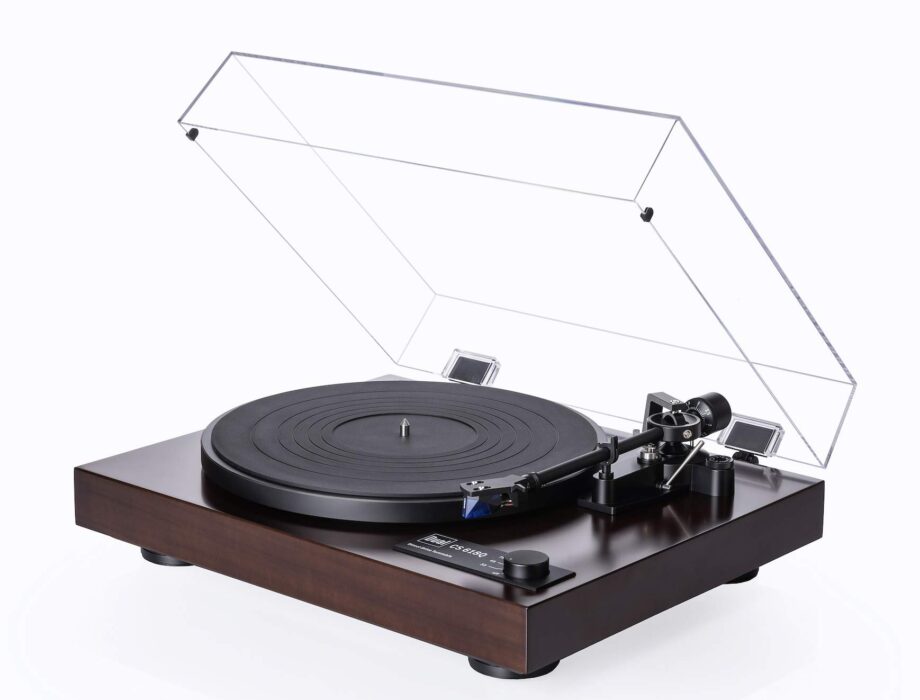
HI Paul,
I found your review just in the nick of time.
I’ve been on the hunt for a EUR 300 turntable to add to my Marantz PM6007 and B&W Dm 602S3’s (something I find myself doing because the kids want me to get into vinyl – crazy Gen Alphas saying it looks really cool !). I’ve always listened to my music on CD, but enjoyed vinyl as a youngster. Anyway, it has been almost 9 months of looking out for the right deal, and would you believe it that a local furniture store has a special on the RP1 Plus at EUR 299 – I assumed that I could just switch the Phono amp off if I wanted to – assumptions are the mother of all…you know. So the hunt continues.